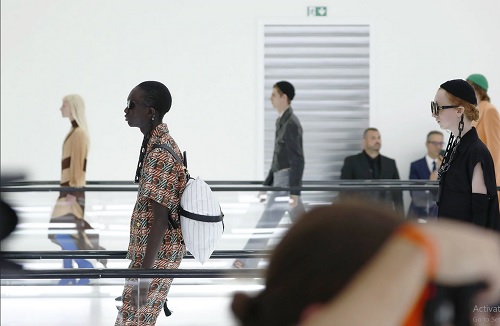"Though many countries added climate crisis to the top of their agenda in 2019, many were not serious about the urgency of this issue. On November 4, 2019, US President Donald withdrew from the Paris Agreement by notifying the United Nations of its intention to leave. Cosigned by the US and 194 other countries in December 2015, the Paris Agreement aims to keep global surface temperatures to below 2°C above pre-Industrial Revolution levels and limit their increase to 1.5°C. According to a UN Environment report published in November 2017, the industry is on its way to achieve these targets. Trump’s decision to withdraw from the Paris Agreement at such time comes as a big blow to industry."
 Though many countries added climate crisis to the top of their agenda in 2019, many were not serious about the urgency of this issue. On November 4, 2019, US President Donald withdrew from the Paris Agreement by notifying the United Nations of its intention to leave. Cosigned by the US and 194 other countries in December 2015, the Paris Agreement aims to keep global surface temperatures to below 2°C above pre-Industrial Revolution levels and limit their increase to 1.5°C. According to a UN Environment report published in November 2017, the industry is on its way to achieve these targets. Trump’s decision to withdraw from the Paris Agreement at such time comes as a big blow to industry.
Though many countries added climate crisis to the top of their agenda in 2019, many were not serious about the urgency of this issue. On November 4, 2019, US President Donald withdrew from the Paris Agreement by notifying the United Nations of its intention to leave. Cosigned by the US and 194 other countries in December 2015, the Paris Agreement aims to keep global surface temperatures to below 2°C above pre-Industrial Revolution levels and limit their increase to 1.5°C. According to a UN Environment report published in November 2017, the industry is on its way to achieve these targets. Trump’s decision to withdraw from the Paris Agreement at such time comes as a big blow to industry.
Only two brands meeting emission targets
An October 2019 report by Stand.earth reveals only two major brands -- Levi’s and American Eagle Outfitters -- are taking enough measures to meet the targets set by the Paris Climate Change Agreement. These two brands are putting the world on the pathway to 1.5°C or less of warming. Meanwhile, 14 other brands, including Burberry, H&M and Kering (owner of Gucci, Alexander McQueen and more) are on target to achieving 2°C.
the targets set by the Paris Climate Change Agreement. These two brands are putting the world on the pathway to 1.5°C or less of warming. Meanwhile, 14 other brands, including Burberry, H&M and Kering (owner of Gucci, Alexander McQueen and more) are on target to achieving 2°C.
Signed by over 40 brands — including Burberry, Stella McCartney and Adidas — the UN Fashion Industry Charter for Climate Action in December 2018 targets GHG emissions reduction by 30 per cent. However, this target falls short of the recommendations put forward by the Intergovernmental Panel on Climate Change (IPCC) in a 2018 report.
Reorganising supply chains to go carbon neutral
Now, over 150 brands have signed up to Autumn 2019’s G7 Fashion Pact which aims to achieve zero GHG by 2050 in order to keep global warming below 1.5°C until 2100. However, the agreement does not set a roadmap to achieve these targets.
In September 2019, Gucci and its parent company Kering announced its intention to go carbon neutral by reducing its emissions before offsetting the rest. However, since 90 per cent of these emissions are generated from the brand’s supply chain, these targets need to address the production part first. It is therefore, the responsibility of the world’s leading fashion companies to help catalyse major shifts across the globe.












